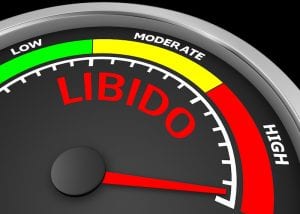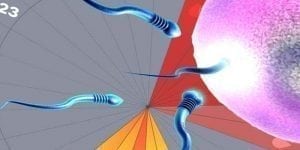Have you ever noticed a fluctuation within your libido at certain points throughout the month?
A woman’s libido, also known as sexual desire, tends to peak during ovulation. Research shows that sex was found to occur 24 percent more frequently during a woman’s most fertile days of her cycle. This is said that the chances of becoming pregnant from a single unprotected act of sex is higher.
Reasons this May Occur
There are biological factors that promote a woman’s drive for intercourse during her six fertile days, regardless if conception is the goal or not. While composing a study of 68 sexually active women, research found that sexual intercourse peaks just before and on the day of ovulation.These women kept a diary of their intercourse and provided daily urine samples over the course of three months. The frequency of sex throughout the cycle was around twice a week, but during the six fertile days it was found to be about two and a half times per week. Therefore showing a 24 percent increase in sexual intercourse within a woman’s fertile days. This biological change in a woman’s libido has been seen to occur with or without the woman’s knowledge of her fertile days.
Hormonal Contraceptives Play a Role
Another study showed similar results from research of 26,000 heterosexual women. The study found that women who were not on hormonal contraceptives had increased sexual desire the day before ovulation. They also found that both self- perceived sexual attractiveness and desire for their partner and other men rose right before ovulation. Research shows that this increase in libido were most likely caused by the fluctuation of hormones that occur before ovulation. As women who were on hormonal contraceptives did not experience an increase in sexual desire during this time. Hormonal contraceptives have been known to suppress sexual desire as one of their side effects due to suppressing hormones.
Is Evolution to Blame?

The biological purpose of life is to reproduce life, therefore evolution has boosted women to feel most sexually aroused when pregnancy is most likely to occur. In a similar sense, once the body has passed ovulation, premenstrual and menstrual days can usually bring discomfort and turn a women off from sex. Studies show that PMS and cramping that may occur tend to suppress a woman’s interest in sex.
Decreased Libido May be a Sign for Concern
A decreased libido may be a sign of hormone imbalance within women. A hormone imbalance could indicate potential issues with fertility.
Symptoms of low sexual desire may include:
- Never or only seldom having sexual fantasies or thoughts
- Being concerned by your lack of sexual activity
- Having no interest in any type of sexual activity, including masterbation
If you notice a consistent decrease within your libido and are concerned, it may be time to consult a doctor.
Things to Consider
While research does show a surge in women’s sexual desire during ovulation, this pattern is not always the case in all women. It is important to keep in mind that other things may also affect a woman’s libido . Things such as hormone imbalance, hormonal contraceptives, stress from work, and long term relationships have been shown to affect sexual desire.




